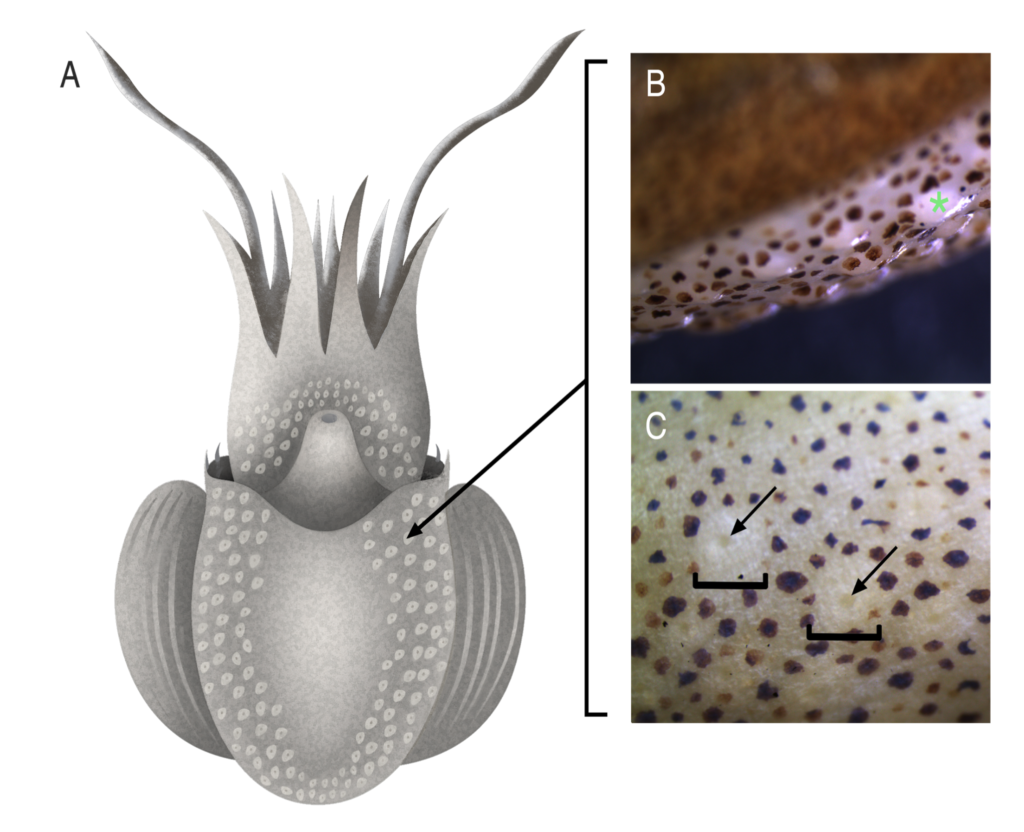In a new paper in the Journal of Proteome Research, MMBG researchers use quantitative proteomics to understand slime secretions in the striped pajama squid.
The striped pyjama squid produces great volumes of slime when threatened, but until now, researchers were unclear as to how this slime is produced and which molecules are responsible for its unique properties.
MMBG researchers A/Porf Jan Strugnell and Dr Ira Cooke, working together with former PhD student Nikeisha Caruana* and colleagues from La Trobe University and Museums Victoria, used a multi-omics approach, combining RNA-seq data with 26 high-resolution mass spectrometry runs to measure the abundance of thousands of proteins in the slime, as well as associated tissues The multi-tissue comparison allowed Dr Caruana to home in on proteins most likely to be responsible for producing the slime.
This work improves our understanding of the squid’s slime at a molecular level and is the first time these glands have been described in detail. The findings suggest that the glands proteomic similarity to the slime and physical structure implicates them as likely secretion structures.
Full paper here: https://pubs.acs.org/doi/abs/10.1021/acs.jproteome.9b00738
*Dr Nikeisha Caruana is currently a Research Fellow at the Bio21 Institute of Molecular Science and Biotechnology, University of Melbourne. Follow on Twitter: @bluebirdi
